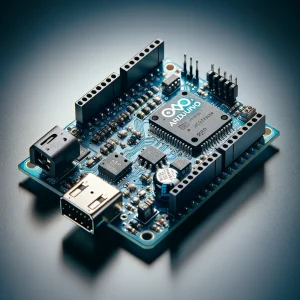An Introduction to Arduino Technology and PIR Sensors
An effective mix of electronics and do-it-yourself projects are passive infrared (PIR) sensors and Arduino boards. Many opportunities for developing interactive systems and devices, especially in automation, security, and environmental monitoring, arise from the use of PIR sensors with Arduino.
Recognizing PIR Sensors
Electronic devices known as PIR sensors use changes in the infrared light emitted by objects within their range of vision to detect motion. Motion detection systems, which include automated lighting and security alarms, frequently employ them. The primary benefits of PIR sensors are their low false trigger rate and energy efficiency due to their passive infrared signal detection.
The Arduino Boards’ Versatility
Arduino boards are microcontroller-based kits that are available as open-source products and are suitable for both novices and experts. They act as the brains behind a variety of do-it-yourself projects, processing inputs (such as PIR sensor motion detection) and regulating outputs (such as turning on a light or alert).
Using Arduino to Interface PIR Sensors
To realize this combination’s full potential, it is essential to have a solid understanding of the fundamentals of PIR sensor and Arduino integration. The PIR sensor should be associated with the Arduino board, the Arduino should be modified to deal with the sensor’s feedback, and the Arduino should then be put to use by carrying out its result contingent upon the info.
Comprehensive Wiring Guide
Attaching the VCC pin of the PIR sensor to the Arduino’s 5V output is the first step in connecting the PIR sensor to the Arduino. Next, attach the sensor’s GND pin to the Arduino’s GND pin by clicking on it. Lastly, connect one of the Arduino board’s digital I/O pins to the signal pin of the sensor.
Assuring a Stable Configuration: To get the best results, make sure all connections are tight and that the PIR sensor is positioned away from heat sources like direct sunshine, which might lead to inaccurate readings.
Using the Arduino to Program Motion Detection
Configuring the Arduino IDE: On your PC, start the Arduino Integrated Development Environment (IDE). Get the Arduino IDE from the official website if you haven’t already.
Composing the Program: Create a software that interprets data from the signal pin of the PIR sensor. The application can initiate an output action, such turning on an LED, setting off an alarm, or sending out a notice, when it detects motion.
Testing and Calibration: After uploading the code to the Arduino board, test the setup by observing how the system responds to motion. Adjust the sensitivity and time delay settings on the PIR sensor if necessary.
Advanced Applications and Projects:
With the basics of PIR sensor and Arduino integration covered, you can venture into more advanced applications and projects.
Systems for Home Security:
A complete home security system may be made by combining many PIR sensors with an Arduino board. You may program the Arduino to detect motion and sound an alarm or to send warnings to your phone.
Lighting That Uses Less Energy
Lay out a framework by which lights switch on consequently when somebody strolls into a room and off after a foreordained measure of time on the off chance that no development is recognized. In addition to being useful, this application also helps conserve energy.
Wildlife Observation:
For projects involving the monitoring of animals, use Arduino and PIR sensors. Install cameras that will take pictures on their own whenever they sense movement. This will help with studying and observing the habits of wildlife.
Conclusion:
PIR sensor integration with Arduino opens up a world of imaginative and useful applications. There are countless opportunities to improve energy efficiency, creative expression, and home security. Anyone may start this fascinating voyage of discovery and invention with a basic understanding of wiring, programming, and application.



Comments
Hi there, just became alert to your blog through Google, and found that it is really informative. I am going to watch out for brussels. I抣l appreciate if you continue this in future. A lot of people will be benefited from your writing. Cheers!
Thanks for sharing your ideas. I would also like to convey that video games have been ever before evolving. Modern technology and enhancements have made it simpler to create authentic and enjoyable games. These types of entertainment games were not as sensible when the actual concept was being experimented with. Just like other areas of electronics, video games also have had to evolve as a result of many many years. This itself is testimony towards the fast development of video games.